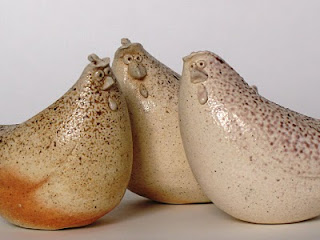When we rescheduled our trip to Illinois, we planned dates so that we could attend the University of Illinois' way cool
Engineering Open House. The UIUC College of Engineering is one of the largest and finest engineering schools in the nation, and every spring the different departments open their doors for two days of posters, demos, and hands-on displays. We learned about charge and electric current, magnetic levitation, fluid dynamics, inertia, high-resolution imaging, 3D printing, plenaria flat worm regeneration, clown fish sexuality, air pressure and the Bernoulli effect, liquid nitrogen and ice cream, electric cars, fruit batteries, CAT-scans and computer modeling, flotation and boat design, bubbles, tempering, mechano- and photo-sensitive polymers, vehicle simulators, induction, gears, levers, pulleys, magnetic accelerators, conservation of energy, gravity, molecular fluorescence, glue-and-borax goop, high-speed imaging, infrared imaging, lithography, copper electroplating,
Prince Rupert's drops, vacuums, air pressure, optical illusions, angular momentum, and a bunch of other stuff. I also learned, with some nostalgia, that the Physics Geek uniform has not changed since I proudly wore it as an Illinois undergrad (corduroys + flannel shirt); and that the university still has lovingly crafted wooden models of intersecting geometric forms squirreled away in the most unexpected places.

For E, two topics stood out: the egg drop and non-Newtonian fluids.
The egg drop involved designing a structure to protect an egg from breaking on impact following a drop from a second-story window. All participants received an egg, a paper cup, two feet of masking tape, and ten xeroxed dollars with which to buy assorted materials (rubber bands, yarn, balloons, cotton balls, popsicle sticks, newspaper). E made a blanket of cotton balls to cushion his egg inside the cup.

S--a German engineer, after all--rigged up an elegant but time-consumingly detailed suspension network of rubber bands inside his cup.

I, the practical potter, spent most of my engineering dollars on quick and easy packing material--wads of newspaper.

The carnage below the window did not bode well for our cargo.


The egg in the plush cotton ball blanket turned out to be our sacrificial lamb, paving the way for our two survivors. We figured two out of three wasn't bad (
litotes!).
Although we spent a lot of time with the eggs, the exhibits that occupied us the most were those on non-Newtonian fluids.
A Newtonian fluid is one whose shear stress and shear rate are related linearly by a constant known as viscosity. A
non-Newtonian fluid is a fluid that deviates from that relation in any way. The most common non-Newtonian fluids have viscosities that decrease with increasing shear rate. The non-Newtonian fluids we saw at EOH were unusual, however, in that their viscosity dramatically
increased with increasing shear rate. They were so much fun to play with that we've decided to have a non-Newtonian fluids fest for E's next birthday party.
To make your own non-Newtonian fluid at home, mix cornstarch with water in appropriate proportions (a little water goes a long way). Punch the mixture, and it behaves like a solid; hold it gently in your hand, and it trickles through your fingers. We're told that water, 150 pounds of cornstarch, and a kiddie pool are the necessary ingredients for running barefoot across a non-Newtonian fluid. If you keep things moving quickly, you can also play catch with cornstarch suspensions.


 The chickens were aggressive bettors. My dad gave them false confidence the first night by letting them win. The next evening, he mopped the floor with them. Honest Abe looked on disapprovingly. "Chickens," he probably never once said, "should not play poker."
The chickens were aggressive bettors. My dad gave them false confidence the first night by letting them win. The next evening, he mopped the floor with them. Honest Abe looked on disapprovingly. "Chickens," he probably never once said, "should not play poker."
















































